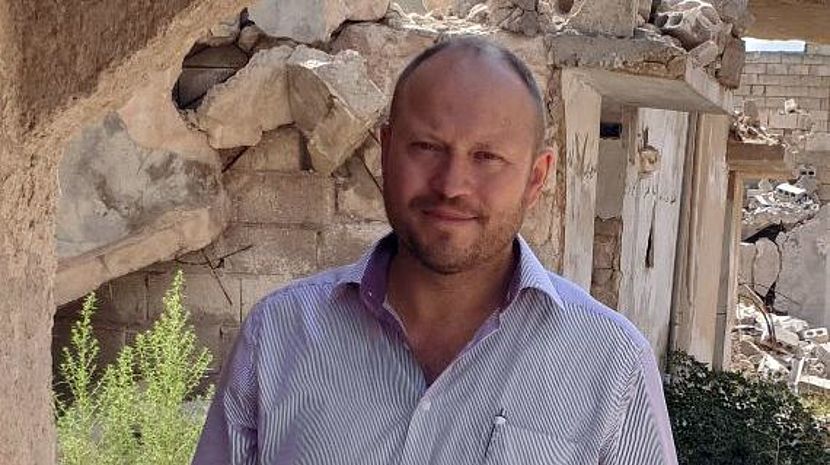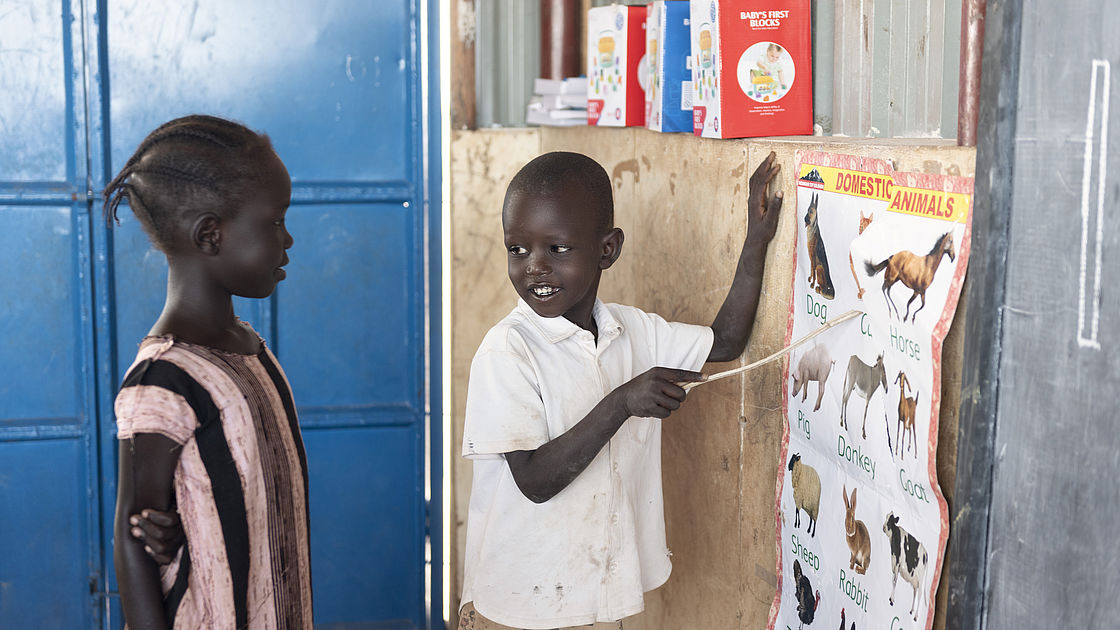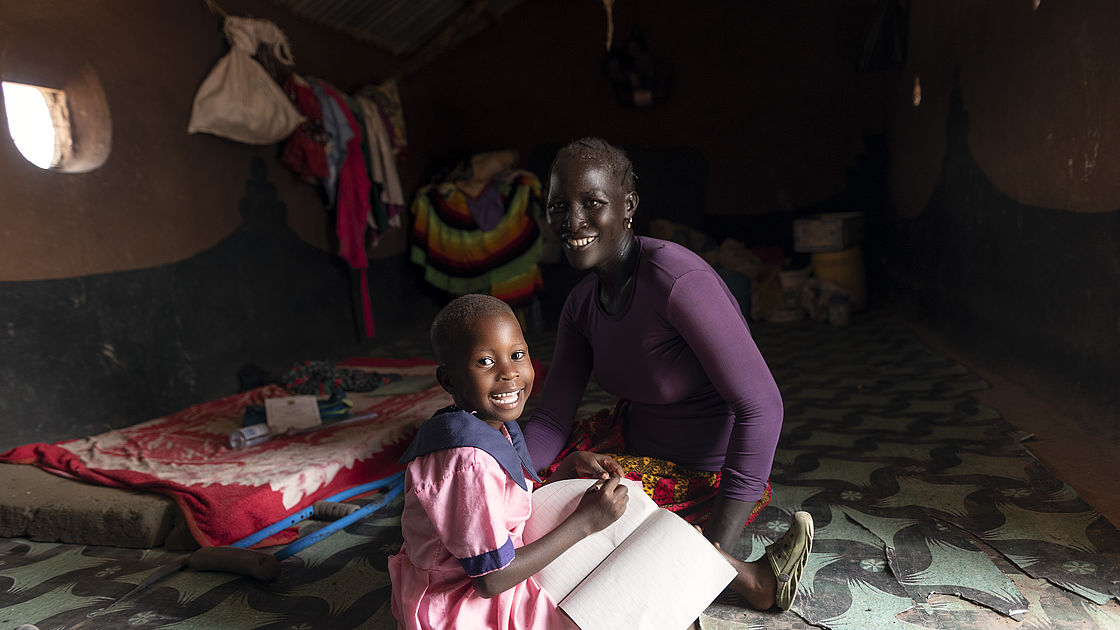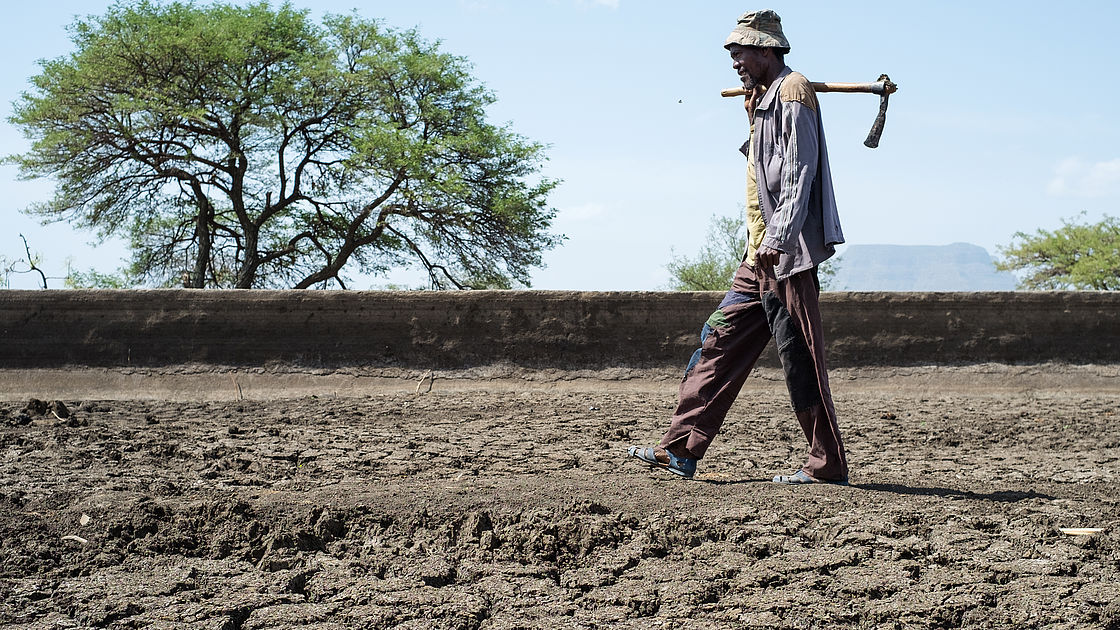Introducing the CBM Inclusive Humanitarian Action Initiative

Roland Schlott, Director of the CBM Inclusive Humanitarian Action Initiative
©CBM
With 50 years of experience in emergency response, CBM has established the Inclusive Humanitarian Action initiative prioritizing the growing needs of persons with disabilities in times of crisis. In part two of this interview, Roland Schlott, Director of CBM's IHA, highlights the importance of establishing the initiative.
Q: Why is humanitarian action now a dedicated initiative at CBM?
A: CBM's extensive experience of 50 years in humanitarian action and crisis response and the rapid growth of humanitarian needs, particularly for persons with disabilities, has led us to launch the Humanitarian Action Initiative. This strategic commitment allows us to expand and strengthen our humanitarian efforts on a larger scale than ever before. It solidifies CBM as a trusted and credible humanitarian organization dedicated to making a meaningful difference in people's lives.
Q: Many aid organizations are already providing humanitarian assistance. What can CBM do that others do not?
A: CBM's expertise lies in addressing the specific needs of persons with disabilities in crises. Our approach is not only inclusive but also focused on mainstreaming inclusion within humanitarian action. We provide training to other humanitarian actors, enabling them to adapt their responses and ensure the active and inclusive participation of persons with disabilities in the relief efforts themselves. For instance, in Bangladesh, persons with disabilities actively participated in distributing relief items to communities affected by flooding in the Gaibandha region. Through these efforts, we aim to shift the perception that persons with disabilities are merely passive beneficiaries. We emphasize their role as part of the solution, actively contributing to humanitarian action.
Q: How would you distinguish Humanitarian Action from Development Cooperation work in general?
A: In development cooperation, solid structures and effective service delivery by governments play a crucial role. However, in humanitarian contexts, governments and their structures are often overwhelmed, necessitating support from the international community. CBM actively engages in both natural disasters and protracted emergencies, with a particular emphasis on addressing the specific needs of persons with disabilities, refugees, internally displaced people, and host communities. Our commitment is to save lives, ensure the well-being and uphold the rights and dignity of affected people throughout our humanitarian efforts.
Q: What implementation steps are being taken to establish this new area of work within CBM?
A: We have highly competent technical advisors and regional humanitarian coordinators guiding the design and implementation of inclusive humanitarian action projects. Technical advice and training are provided to our country programs and country-based humanitarian coordinators are established in frequently affected countries. Additionally, we engage in research, gather evidence of good practices, and collaborate within networks to establish global guidelines for inclusion in humanitarian action.
Q: What is the difference between humanitarian action and Disability Inclusive Disaster Risk Reduction (DIDRR)?
A: Humanitarian action responds to acute and protracted crises situations and empowers communities to recover from crises while promoting self-sufficiency. For instance, in addition to providing food, water and other essential live-preserving items in acute crises, we also distribute seeds and tools to enable people to cultivate and produce their own food. If individuals have been displaced, we work to negotiate with local landowners, securing land for them to grow crops. This approach has been successfully implemented in DR Congo to enhance resilience in the face of ongoing challenges and recurrent forced displacement situations.
DIDRR on the other hand aims to enhance the participation of persons with disabilities by reducing barriers and strengthening enabling actions. DiDRR works best in undisrupted locations with primary duty bearers (government) present and able to take the efforts forward. Therefore, we address DIDRR as part of our Community Based Inclusive Development (CBID) programming. Including people with disabilities in all stages of DRR reduces their vulnerability and improves the effectiveness of government response, recovery, and rehabilitation. It promotes a rights-based approach by empowering and building the capacity of persons with disabilities for active participation in decision-making processes that concern them directly.
Q: How can your work be supported and by whom?
A: Our humanitarian work is supported by private and institutional donors and philanthropists, a large part of which comes from the German Federal Foreign Office (GFFO) and the German Ministry for Economic Cooperation and Development (BMZ). We appeal for support from private donors through our communications during humanitarian situations or natural disasters. Private donations can be used more flexibly to work through new partners. We also mobilize funds through the donation alliance "Bündnis Entwicklung Hilft" (BEH) in Germany. For instance, our engagement in the situation in Ukraine is funded through funds collected by BEH.
Inclusive Education for Refugee Children with Disabilities in Kenya

Key partnerships in 2023 also include working with the Carter Centre to providing critical eye surgeries in South Sudan and receiving the Zero Project Award 2024 for innovative inclusive education projects in Kenya, the Eastern Mediterranean and Guatemala. CBM is also leading the training of professionals from six African countries on the inclusion of persons with disabilities in humanitarian aid in Cameroon.
©CBMThe number of people forced to flee conflict, violence, human rights violations and persecution has exceeded 100 million for the first time in history.
One of them is Thomas, whose family fled South Sudan in 2016 when the war began. He is growing up in the Kakuma refugee camp in Kenya and goes to school here. He was lucky because his teacher was trained by CBM in inclusive education. She noticed that he had difficulties with his sight and hearing. Through her attention and a simple measure - she put Thomas in the front row - he is now doing better at school.

Get part one of this interview here: Strengthening Inclusive Humanitarian Response for Persons with Disabilities
